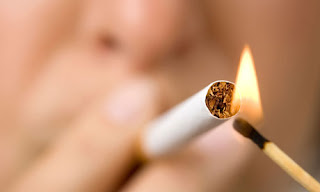
Although fewer kids are being exposed to smoking while riding in cars, more than 20 percent of nonsmoking teens still are, U.S. health officials report.
Secondhand smoke can be particularly intense in a closed space, such as inside a car, and poses a significant health risk, the researchers noted.
"There have been marked decreases in exposure to smoking in cars," said report author Brian King, an epidemic intelligence service officer in the Office on Smoking and Health at the U.S. Centers for Disease Control and Prevention. "That decrease occurred whether they were nonsmokers or smokers," he noted.
"But what is alarming is that, despite that decrease, we are still seeing large levels of exposure, particularly among nonsmokers," King said. "One in five nonsmokers is still exposed to secondhand smoke in that environment."
The drop in smoking in cars is probably a mix of several factors, including fewer people smoking and smoke-free laws that also have a spillover effect on limiting smoking in homes and cars, King noted. In addition, there have been changes in the attitudes about social acceptability of smoking, especially when nonsmokers are present.
"We know that there is no safe level of secondhand smoke," King said.
The best way to eliminate secondhand smoke exposure is to implement 100-percent smoke-free environments, he added.
"Implementing voluntary smoke-free policies in your vehicle or expanding existing smoke-free policies that also include motor vehicles could help reduce that secondhand smoke exposure," King said.
Four states already have laws that prohibit smoking in cars when there are children aged 16 or younger inside. These states are Arkansas, California, Louisiana and Maine, along with Puerto Rico.
The report was published in the Feb. 6 online edition of Pediatrics.
Using data from the National Youth Tobacco Survey, which looks at smoking among U.S. students in grades 6 through 12, the researchers found that from 2000 to 2009, the number of children exposed to smoke in cars had declined.
Among nonsmoking students, the exposure to smoke in cars went from 39 percent in 2000 to 22.8 percent in 2009, and among smoking students it went from 82.3 percent in 2000 to 75.3 percent in 2009, King's team found.
But, that means that in 2009, over 22 percent of nonsmoking students and 75 percent of smoking students were still being exposed to secondhand smoke in cars, the researchers added.
Secondhand smoke can lead to acute respiratory infections, middle ear disease, delayed lung growth and more severe asthma, the authors noted.
Commenting on the study, Danny McGoldrick, research director at the Campaign for Tobacco-Free Kids, said that "it's great news that youth exposure to secondhand smoke in cars has declined significantly, but there is still much work to do to protect the many students who are still exposed. We support the call for the adoption of voluntary and legislative policies prohibiting smoking in cars with kids," he added.
It is especially critical that states and communities adopt comprehensive smoke-free laws that include all workplaces and public places, McGoldrick said.
"These laws heighten awareness about the dangers of secondhand smoke, and prompt the adoption of voluntary smoke-free policies in nonpublic places, like homes and cars," he added.
Комментариев нет:
Отправить комментарий